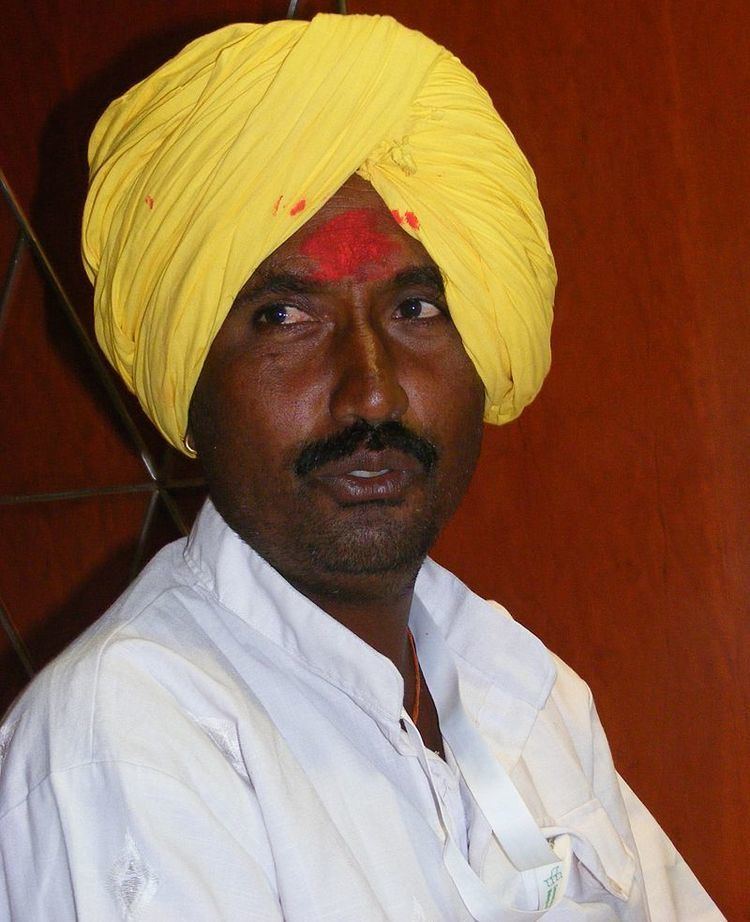 | ||
Similar Maratha clan system, Kunbi, Lohar | ||
The Dhangar (Dhangad) are a herding caste of people primarily located in the Indian state of Maharashtra.
Contents
Etymology
The word "Dhangar" may be associated with a term for "cattle wealth" or be derived from the hills in which they lived (Sanskrit "dhang"). Ul Hassan noted that some people of his time believed the term to come from the Sanskrit "dhenugar" ("cattle herder") but dismissed that etymology as being "fictitious".
Current situation
Traditionally being shepherds, cowherds, buffalo keepers, blanket and wool weavers, butchers and farmers, the Dhangars were late to take up modern-day education. Though they have a notable population, not only in Maharashtra but also in India at large, and a rich history, today they are still a politically highly disorganised community and are socially, educationally, economically and politically backward. They lived a socially isolated life due to their occupation, wandering mainly in forests, hills and mountains. In Maharashtra, the Dhangars are classified as a Nomadic Tribe but in 2014 were seeking to be reclassified as a Scheduled Tribe in India's system of reservation.
The 2011 Census of India for Uttar Pradesh showed the Dhangar classified as a Scheduled Caste, with a population of 43,806.
Culture
Dhangars worship various forms of gods, including Shiva, Vishnu, Parvati and Mahalaxmi as their kuldevta or kuldevi. These forms include Khandoba, Beeralingeswara (Biroba), Mhasoba, Dhuloba (Dhuleshwar), Vithoba, Siddhanath (Shidoba), Janai-Malai, Tulai (Tulja Bhavani), Shree Nath Mhaskoba (Vir) , Yamai, Padubai, and Ambabai. They generally worship the temple of these gods that is nearest to their residence which becomes their kuladev and kuladevi. In Jejuri, the deity Khandoba is revered as the husband of Banai, in her incarnation as a Dhangar. He is, therefore, popular amongst the Dhangars, as they consider him their kuldevta. Khandoba (literally "father swordsman") is the guardian deity of the Deccan.
Tribes
Initially there were twelve tribes of Dhangar, and they had a division of labour amongst brothers of one family. This later formed three sub-divisions and one half-division. These three being Hatkar (shepherds), Ahir (cowherds) and Khutekar (wool and blanket weavers)/Sangar. The half-division is called Khateek or Khatik (butchers). All sub-castes fall in either of these divisions. All sub-divisions emerge from one stock, and all sub-divisions claim to be a single group of Dhangars. Studies have revealed that they are genetically the closest. The number three and a half is not a random selection but has a religious and cosmological significance.
All Dhangars of Western Maharashtra and Konkan/Marhatta country, like Holkars, can be termed "Marathas", but all Marathas are not Dhangars.
Clans in India
Reginald Edward Enthoven listed 22 endogamous groups (sub-castes) and 108 exogamous groups (clans) of Dhangars, though other scholars state that this is not exhaustive.
